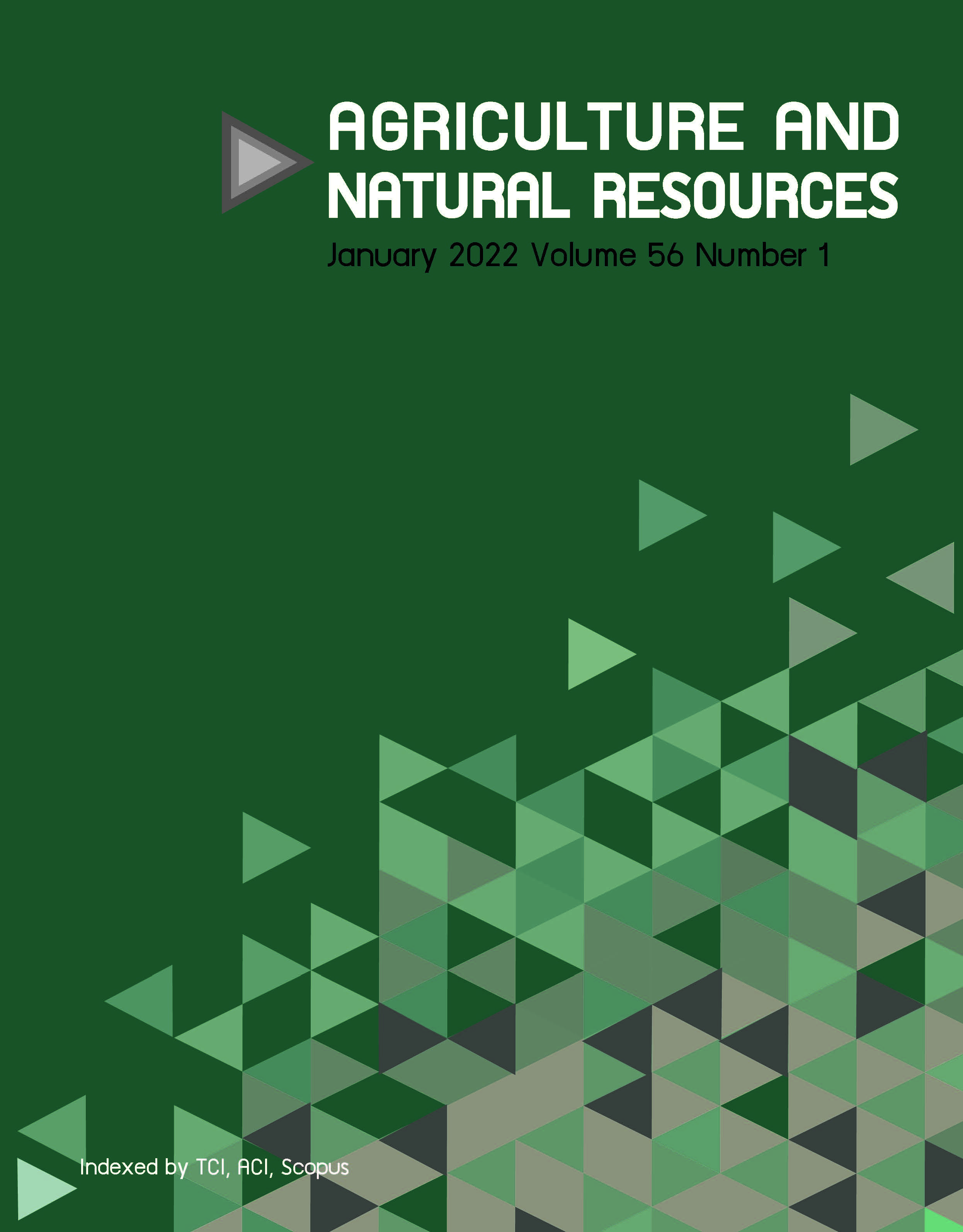Effects of ethanol-water extraction on antioxidants from Riceberry (Oryza sativa L.) bran
Keywords:
Anthocyanins, Antioxidant activity, Extraction, Riceberry bran, Total phenolic contentAbstract
Importance of the work: Solvent-to-substrate ratio and extraction time are the most effective for antioxidant extraction.
Objectives: The study aimed to investigate the non-acid and acid solvents, ethanol concentration (0–70%) and extraction time (30–180 min) on the extraction of antioxidants from Riceberry (Oryza sativa L.) bran.
Materials & Methods: The total phenolic content (TPC), 2,2-diphenyl-1-picrylhydrazyl (DPPH) radical scavenging activity and ferric reducing antioxidant power (FRAP) were used to determine the antioxidant activity of the Riceberry bran. High performance liquid chromatography analysis was applied to investigate the profiles of the phenolic compounds and anthocyanins and to determine the contents of each compound.
Results: The optimum extraction conditions for Riceberry bran were 50% ethanol and an extraction time of 60 min based on the mean (± SD) TPC (17.18 ± 0.62 mg gallic acid equivalents/g dry weight (DW)), DPPH radical scavenging activity (46.68 ± 3.35 mg 3,5-di-tert-4-butylhydroxytoluene/g DW) and FRAP (1.17 ± 0.05 mol Fe(II)/g DW). The Riceberry bran contained three major phenolic compounds: ferulic acid (FA), vanillic acid (VA) and gallic acid (GA) and two main anthocyanins: cyanidin-3-O-glucoside (C3G) and peonidin-3-O-glucoside (P3G). Since FA and C3G were predominant in Riceberry bran, the optimum conditions for extraction of the phenolic compounds and anthocyanins followed the conditions of FA and C3G, respectively. The optimum conditions for extraction of FA, VA and GA were 0% ethanol and an extraction time of 180 min producing 79.79 ± 2.57 μg FA/g DW, 29.67 ± 0.53 μg VA/g DW and 49.95 ± 0.73 μg GA/g DW, respectively, whereas the optimum conditions for C3G and P3G were 0.1% HCl in 70% ethanol for 180 min (producing 356.86 ± 0.04 μg C3G/g DW and 49.42 ± 1.92 μg P3G/g DW, respectively).
Main finding: The results of this study identified the optimum extraction conditions to obtain high TPC values and antioxidant activity as well as high anthocyanin contents (C3G and P3G) and environmental-friendly extraction for FA, VA and GA.
Downloads
Published
How to Cite
Issue
Section
License
Copyright (c) 2022 Kasetsart Universityonline 2452-316X print 2468-1458/Copyright © 2022. This is an open access article under the CC BY-NC-ND license (http://creativecommons.org/licenses/by-nc-nd/4.0/),
production and hosting by Kasetsart University of Research and Development Institute on behalf of Kasetsart University.







